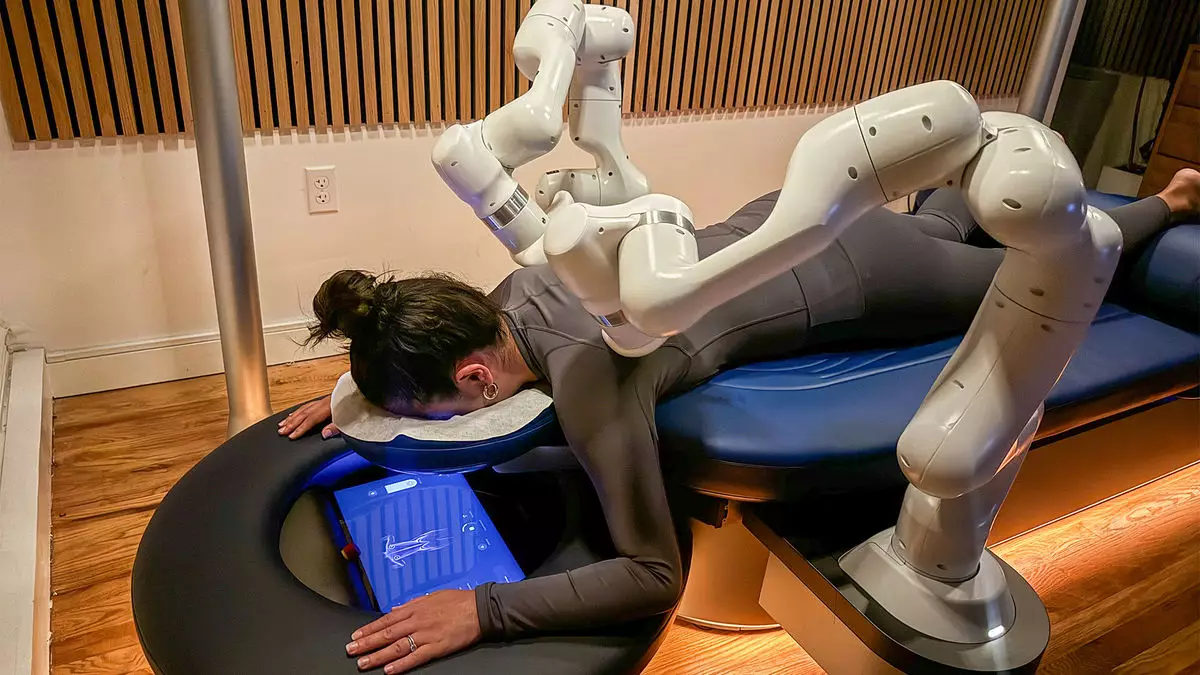Lying on a massage table fully clothed, covered in a skintight outfit designed to create friction between the body and robotic arms, paints a picture of an unconventional spa experience. While the idea of a high-tech massage may appeal to some, individuals seeking relaxation and stress relief through a traditional spa session may find this approach daunting. The utilization of AI technology to scan the body and customize the massage duration and pressure sounds intriguing. However, the overall setup of a robotic massage may lack the personal touch and human connection typically associated with spa treatments.
The founder of Aescape, Eric Litman, acknowledges the limitations of traditional massage therapy in addressing chronic pain, leading to the development of an automated solution. While automation may provide a convenient and consistent experience, it raises questions about the role of human touch in wellness treatments. Litman emphasizes that the robotic massage table aims to complement existing spa services rather than replace human massage therapists. However, the concept of automation replacing or overshadowing human interaction in the wellness industry may deter individuals who value the therapeutic benefits of personal connection during treatments.
Aescape positions its robotic massage table as a tool for recovery-focused treatments and catering to time-constrained consumers seeking efficient massage experiences. The emphasis on reaching individuals uncomfortable with traditional massages due to privacy concerns or touch aversion suggests a niche market segment. While the technology may appeal to a tech-savvy audience, it may alienate those seeking holistic, hands-on healing experiences. The pricing structure, with a monthly licensing fee for hotels and operating costs estimated at $250 per day, may deter smaller establishments from incorporating the automated massage service.
The partnership between Aescape and the iLa Only Spa at the Lotte New York Palace highlights the potential of robotic massage technology in the hospitality sector. By extending spa operating hours and accommodating a larger number of guests, hotels can enhance their wellness offerings and attract tech-inclined clientele. However, the question arises whether the integration of automated massage services compromises the personalized and intuitive approach traditionally associated with high-end spa experiences. While the convenience and efficiency of robotic massages may appeal to a certain demographic, it remains to be seen how this technology affects the overall guest satisfaction and loyalty in luxury hospitality establishments.
The emergence of robotic massage technology, as exemplified by Aescape’s innovative approach, challenges conventional notions of spa treatments and wellness experiences. The balance between automation and human touch, convenience and personalization, and technology and tradition remains a key consideration in evaluating the impact of these advancements on the hospitality and wellness industries. While the technological prowess and efficiency of robotic massages may appeal to a specific consumer segment, the potential implications on the authenticity and therapeutic value of spa treatments warrant critical examination. As the industry navigates the integration of AI-driven solutions, it is essential to prioritize consumer preferences, holistic wellness practices, and the sustainability of human-centered care in shaping the future of spa experiences.


Leave a Reply